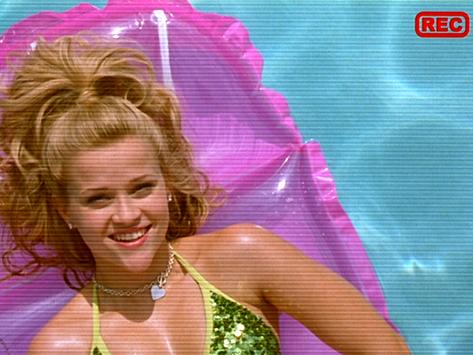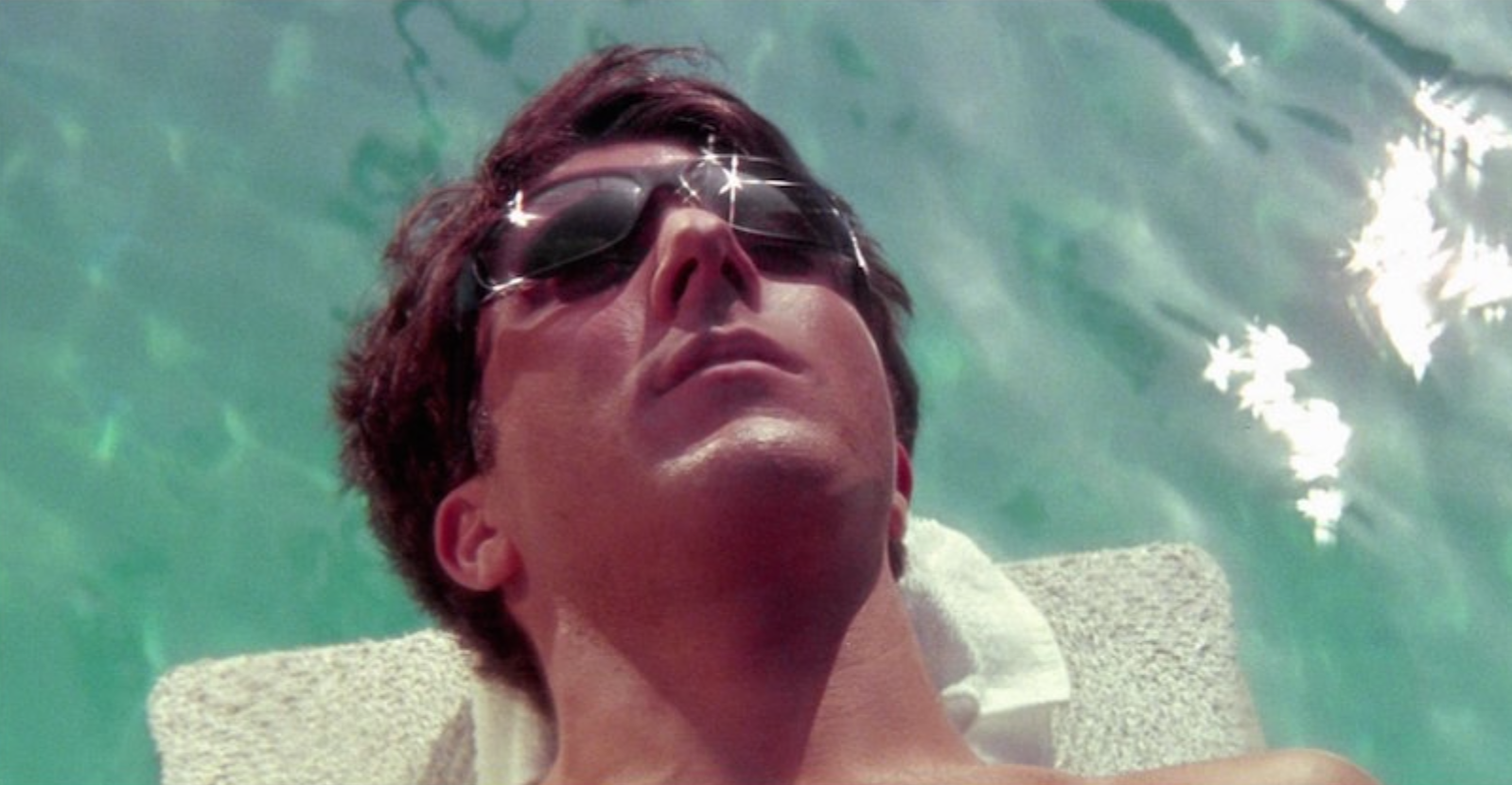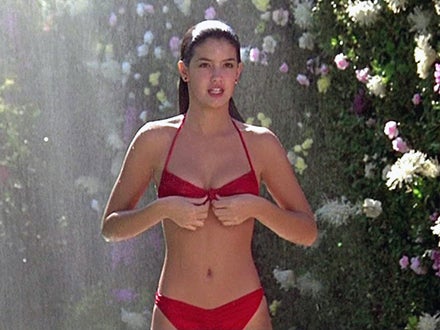Making waves: How women are reclaiming the pool scene
With a whole host of titles to choose from, Amanda Hess examines how modern film, and music, is allowing the infamous pool scene to be ruled by women – not men

Your support helps us to tell the story
From reproductive rights to climate change to Big Tech, The Independent is on the ground when the story is developing. Whether it's investigating the financials of Elon Musk's pro-Trump PAC or producing our latest documentary, 'The A Word', which shines a light on the American women fighting for reproductive rights, we know how important it is to parse out the facts from the messaging.
At such a critical moment in US history, we need reporters on the ground. Your donation allows us to keep sending journalists to speak to both sides of the story.
The Independent is trusted by Americans across the entire political spectrum. And unlike many other quality news outlets, we choose not to lock Americans out of our reporting and analysis with paywalls. We believe quality journalism should be available to everyone, paid for by those who can afford it.
Your support makes all the difference.There is a three-second shot in Hulu’s Shrill that lingers. Annie, a tenderly insecure young journalist played by Aidy Bryant, is at her first Fat Babe Pool Party. It’s a glamorous bash featuring women dancing and splashing around in cute swimwear, and while Annie is enchanted with what she sees, she is not quite ready to experience it herself. Instead she perches on the pool’s edge in black jeans and a short-sleeve button-up shirt. In her journey towards self-acceptance, she is just getting her feet wet.
Then Annie sees something that compels her to dive in. A woman glides by in a hot-pink swimsuit on a hot-pink inner-tube, her arms outstretched in a pose of total relaxation. The woman is filmed from above. Shaka King, who directed the episode, told Vulture that this is not how Annie sees the woman from the side of the pool: “It’s how she sees her in her mind.” It’s a fantasy shot.
We’ve seen this image before: in Legally Blonde, when Elle Woods (Reese Witherspoon) climbs aboard a pink float for her video “application” to Harvard Law School, and in The Graduate, when Benjamin drifts in his parents’ pool, the picture of post-college ennui. The shot anchors the title sequence of Netflix’s BoJack Horseman, and it is the resting posture of the southern California nihilist in The Big Lebowski. These days, it is a summer staple of the Instagram model, too. For men, the shot conveys luxury and ease, but beneath the sunny exterior lie depths of alienation, depression and, sure, nihilism. For women, the motivations behind the shot are rarely so complex. It’s a leering angle.
But we’ve never seen it deployed quite like this: as a woman’s fantasy of another woman, and really, of herself. Annie is drawn not to an idealised body, but to an idealised way of being. In Shrill, the shot dispels the stress, shame and self-hatred that can accompany being a woman in a swimsuit. “It’s such a freeing thing to float in water,” Bryant says of the shot, and yet “it’s such a fraught experience for so many women”. The episode, Pool, imagines what it might be like for those tensions to dissipate.
The swimming pool is among the most alluring symbols of summer and Hollywood has both reflected and shaped its mystique. The pool is a shimmering mirage of wealth, sex and fun that beckons the viewer towards dark undercurrents of loss, sin and death. The pool’s very architecture suggests hidden depths. The waterline is the boundary between the stated and implied, our consciousness and our dreams.

The pool represents a lot of things, but it has also served as a straightforward tool for satisfying the male gaze on film. It is a pretence for babes to appear. But recently female creators have reframed the pool as something new: a place where a woman can be the complicated subject, with her own issues and her own fantasies.
Men are allowed to float through pop culture, their half-naked time drifting atop a pool doubling as a signal of emotional profundity. But for women, the pool is often filmed as a flat, uncomplicated pleasure. These women are typically beautiful, young, thin and white. They are filmed in water as if it is their natural habitat, and the bikini their everyday uniform. They are all Elle Woods, floating into Harvard Law.
And they are viewed from a male perspective, whether it’s literal or implied. Think of Elle’s all-male admissions board assessing her worth, or the woman swan-diving into the pool in Caddyshack as the men gape, or Denise Richards emerging glistening from the water in Wild Things, or the most indelible pool fantasy sequence of all time: Phoebe Cates unlatching her red bikini top in Fast Times at Ridgemont High, if only in Judge Reinhold’s imagination.
When these women are shot from above, it is not an exercise in insight but in expedience. The woman is positioned beneath the camera, which allows for an obvious anatomical reveal and also a submissive posture. She is beneath us: that’s the fantasy. Occasionally, women leverage this image in a bid to manipulate men, as is the case in Legally Blonde and in Wild Things. Often this fantasy of female confidence is juxtaposed with male self-doubt; the sad boys of Rushmore and Ferris Bueller’s Day Off gaze upon women with envy and desire before they gesture at drowning themselves. This is part of what makes the Shrill episode so interesting: the aerial pool shot reappears, but men are not invited to this party.

The old pool scenarios are quickly becoming passé. Even Stranger Things, Netflix’s nostalgic remix of 1980s tropes, has rethought its perspective. The show began with Jonathan creepily crouching in the bushes and photographing his crush, Nancy, as she swam, and his attention paid off: they coupled up. But in the new third season, which centres its plot on the town pool, the sex object is the shirtless, feathered-haired lifeguard Billy, who is ogled by a line of swimsuit-clad mothers reclining lustily in their pool chairs.
The pool is a pressure cooker of social expectations for women: to diet, shop, shave, tweeze, sculpt and tone. It lays bare discriminations of race, gender performance and size
Lately the swimming pool scene has received an infusion of new perspectives from female storytellers and stars. In the coming-of-age films Booksmart, Lady Bird and Eighth Grade, in the shows Shrill and HBO’s Insecure, in the videos of Beyoncé and the internet presence of Lizzo, the pool is more than a set piece for the male gaze. Through them, the pool’s overwrought metaphors are stripped away to reveal more grounded tensions and revelatory fantasies. The visceral reality of a woman’s relationship to the water is interesting enough.
The pool is a pressure cooker of social expectations for women: to diet, shop, shave, tweeze, sculpt and tone. It lays bare discriminations of race, gender performance and size. It’s a miserable objectification zone of ourselves and others, the feeling Shrill writer Samantha Irby has called “how do my legs look compared to their legs”. The expectation that women exhibit an easy confidence in this scenario is its own kind of prison. But the pool is still a site of opportunity: for freedom, pleasure, sex, friendship and rebirth. In the funhouse-mirror refractions of the pool, a woman’s body may be viewed in a new light.
In Lady Bird and Eighth Grade, the pool is the domain of the rich, popular kids, an access point to an elevated social circle – and a place for harshly exposing one’s incompatibility in that world. Kayla (Elsie Fisher), the painfully shy loner of Eighth Grade, is unexpectedly invited to a popular girl’s pool party, and spends the afternoon lurking at the pool’s edge, watching as her classmates’ slick bodies fit effortlessly into social arrangements. Kayla is enchanted by the image of one boy – she watches, slack-jawed, as he emerges from the pool — but she herself is invisible. Her only escape is to dip under the water, where she must hold her breath, which is really what she feels like she is doing all the time.
Then there is Beyoncé, who has done more than any other artist to subvert the dominant pool tropes. While the fancy pools of pop culture belie a fundamental emptiness, she has a wonderful time splashing around in aboveground plastic versions
In Booksmart, the typical male conquest of the teen movie is subverted when Amy (Kaitlyn Dever), the film’s studious heroine, pursues her skater-girl crush in the pool at a graduation party. Amy has never had sex, but she wants to, and as she slips underwater, she enters her own kind of fantasy state, gliding toward self-actualisation, only to come up for air and discover her dream date kissing a boy. While Eighth Grade and Shrill succeed by recasting the female body – as a site of stress, and of opportunity – Booksmart keeps its eyes underwater, eliding the bodily focus of the teen sex romp to hang on emotion instead.
And in the third season of HBO’s Insecure, Issa (Issa Rae) gets the full metaphorical-pool hero treatment when she walks past her childhood home with her new love interest Nathan, and sneaks in to take a dip in the backyard pool. There is an equality of skin on display here — first Nathan strips naked, and then Issa does, swapping rubbernecking for an intimate mutual gaze. As they tread water together, Issa reveals herself to Nathan with an honesty that has eluded her in past relationships. The pool is sensual and baptismal at once.
Perhaps the apotheosis of female pool ownership belongs to the modern pop star. In music videos and on social media, they are telling their own stories about their bodies, and on their own terms. Lizzo, who has recast herself as the star of vintage workout tapes in her music videos, has also posted zoomed-in, slow-motion videos of herself joyously twerking in the pool and emerging from it in a glamorous bikini, Phoebe Cates-style. “I love creating shapes with my body, and I love normalising the dimples in my butt or the lumps in my thighs or my back fat or my stretch marks,” she says to Essence.
Then there is Beyoncé, who has done more than any other artist to subvert the dominant pool tropes. While the fancy pools of pop culture belie a fundamental emptiness, she has a wonderful time splashing around in aboveground plastic versions. In the videos for “Party” and her Nicki Minaj-collaboration “Feeling Myself”, a cheap pool is made luxurious by her mere presence within it. There are depths to this reclamation. The swimming pool became a symbol of opulence and exclusivity partly through its role in segregation. The glittering image of white luxury rested on barring black swimmers; if a person of colour set foot in a whites-only “public” pool during Jim Crow, it would be drained. Beyoncé challenges that painful image in her video for “Formation”: spliced with shots of a flooding New Orleans, a crew of black synchronised “swimmers” creates its own waves at the bottom of an empty pool.
In Shrill, Annie wants to pitch the Fat Babe Pool Party as a story to her condescending and fatphobic editor, but he turns her down. He tells her: “Bodies in a pool, that’s not a story.” She writes the piece anyway, posts it without his permission and watches it go viral. It’s a story now, and it’s a hit.
© New York Times
Join our commenting forum
Join thought-provoking conversations, follow other Independent readers and see their replies
Comments